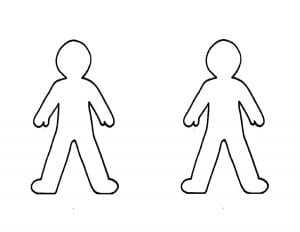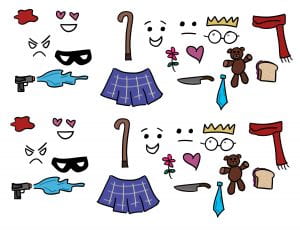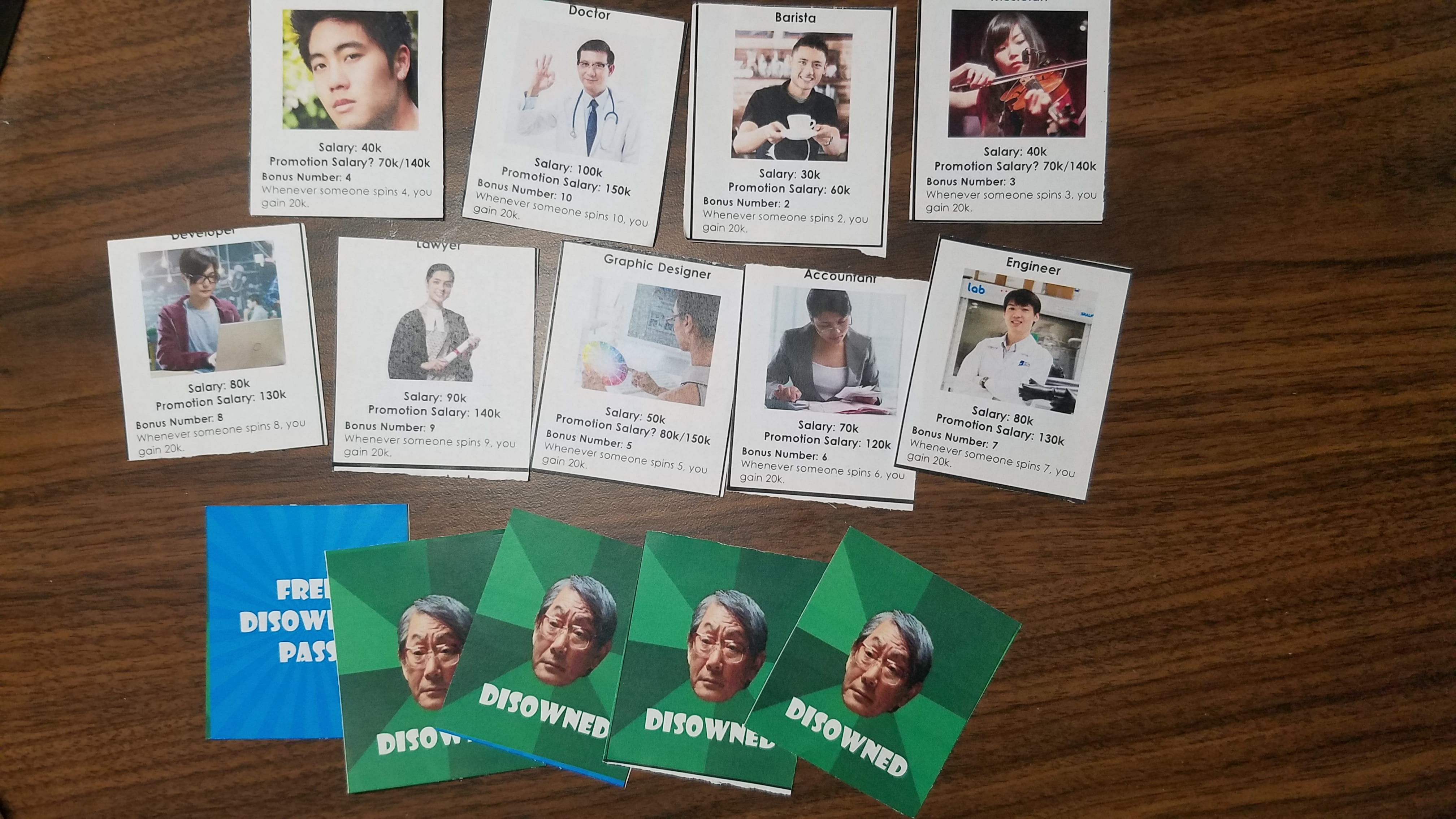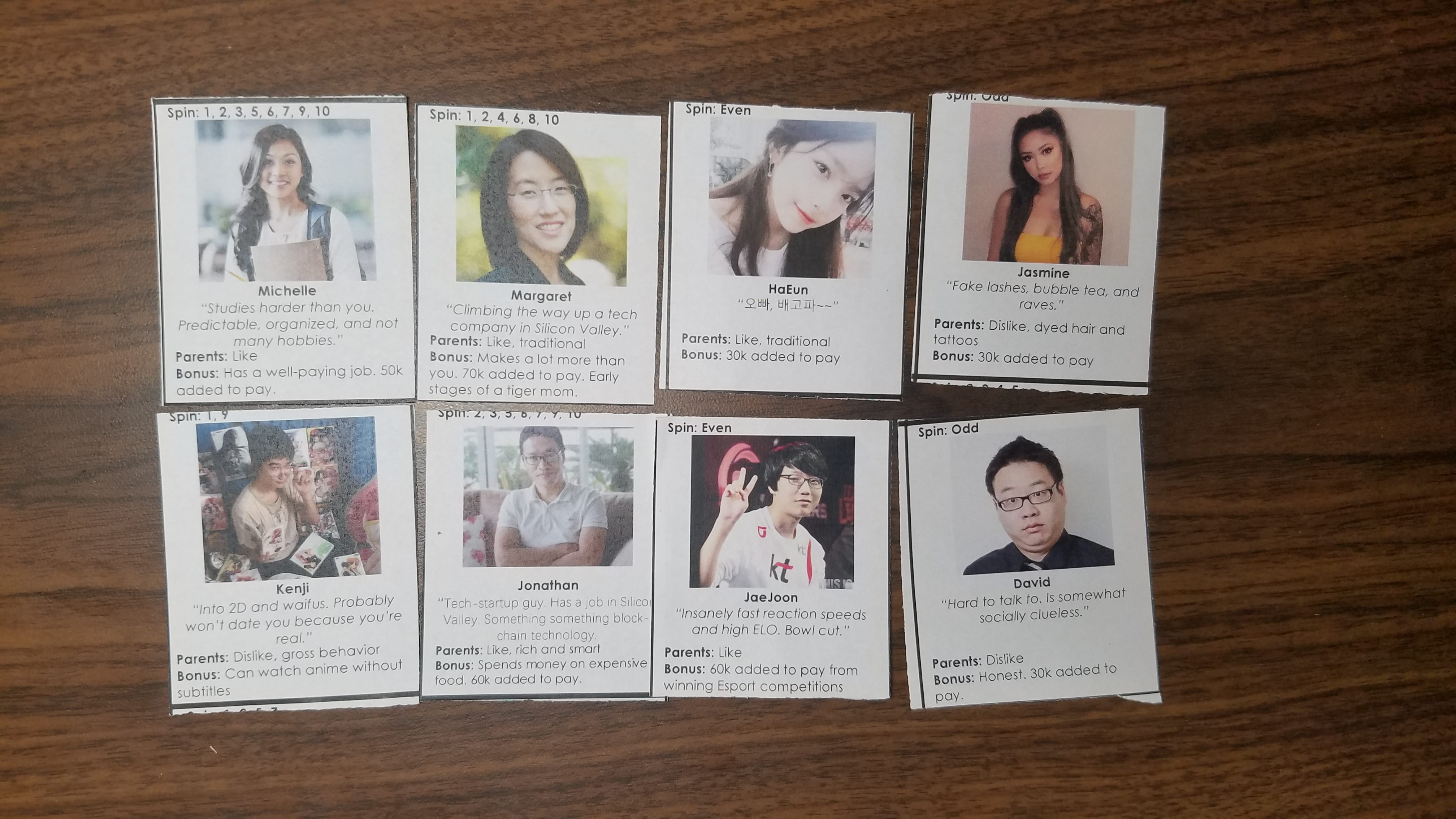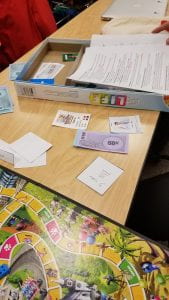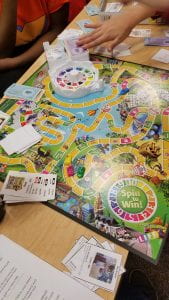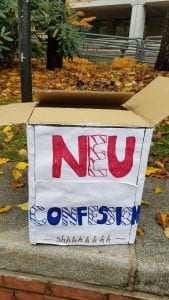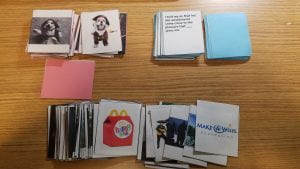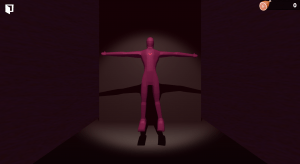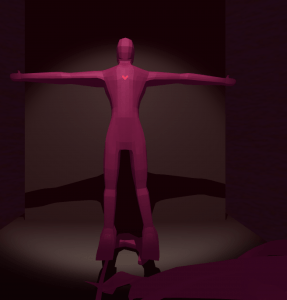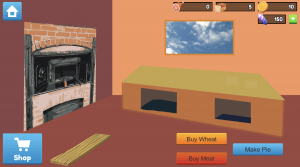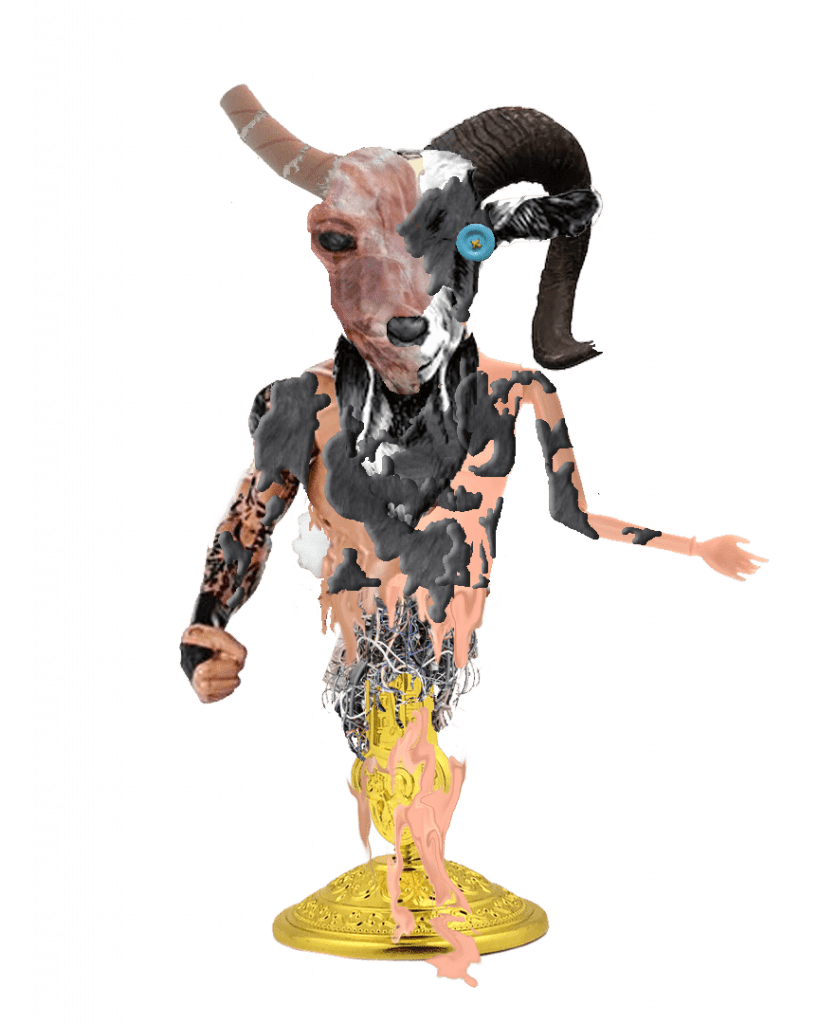My project was designed to try to get players to not always take things at first glance. It was inspired by how we generally one thing and assume something about a person, when that isn’t always the case.
Version #1:
This game went through several iterations. The first was a basic trial where each player drew a card that simply said “friend” or “enemy” and including a defining characteristic that was contrary to the title on the card. The player then had to draw a character of their own creation that included that characteristic, but could still convince viewers that it was either a friend or enemy, as dictated by the card. They would then show all the other players their drawing and those players would have to vote on whether they thought it was a friend or an enemy. For example, a player could draw a card that said “enemy: must be smiling”. The smile could then cause people to think it was a friend, when it’s actually an enemy.
The problem with this version was that it was too black and white, and while they had that one parameter, there were too many other things they could draw to counter it. It was too open.
Version #2:
This version was similar to the first one, except instead of just saying friend or enemy, the card would list a single trait, which either a friend could or couldn’t have that the enemy would have the opposite of. The problem with this was if someone drew a card that simply listed something they could not draw, and again it was too open ended.
Version #3:
The third and final version of this game is a mix of telephone and exquisite corpse. Players sit in a circle, and the first player draws a card that either says friend or enemy, that no one else gets to see. They then draw an attribute from a bag (shown below) and place it on a figure of a person (also shown below). These are all made of magnets, and attach to the person. They then pass the person and the bag to the next player, who tries to decide whether it’s a friend or an enemy, based on the placement of the item, and then proceed to draw another attribute and attach it, depending on whether they thing it’s a friend or an enemy. During this process, no talking is allowed, which 1.) helps aid the mystery of the game and 2.) recreates that atmosphere of silent judgement throughout a group of people. When the person gets to the last player, that player tries to guess whether it’s a friend or an enemy, at which point the first player will reveal the truth.
Notes:
In earlier tests, I allowed dialogue between players and it was interesting to hear their thought processes about sizing up a person and which factors stood out to them more so than others. A lot of it pointed to their face or things they were holding, which leads me to believe that those are the first traits we notice about a person. However, what their face looked like always had an internal story others might have always known, and what they were holding could greatly vary depending on the circumstance. I think this game succeeded at least in pointing out the nuances of first impressions, and caused me to think a little bit more about just how we examine and understand others.
